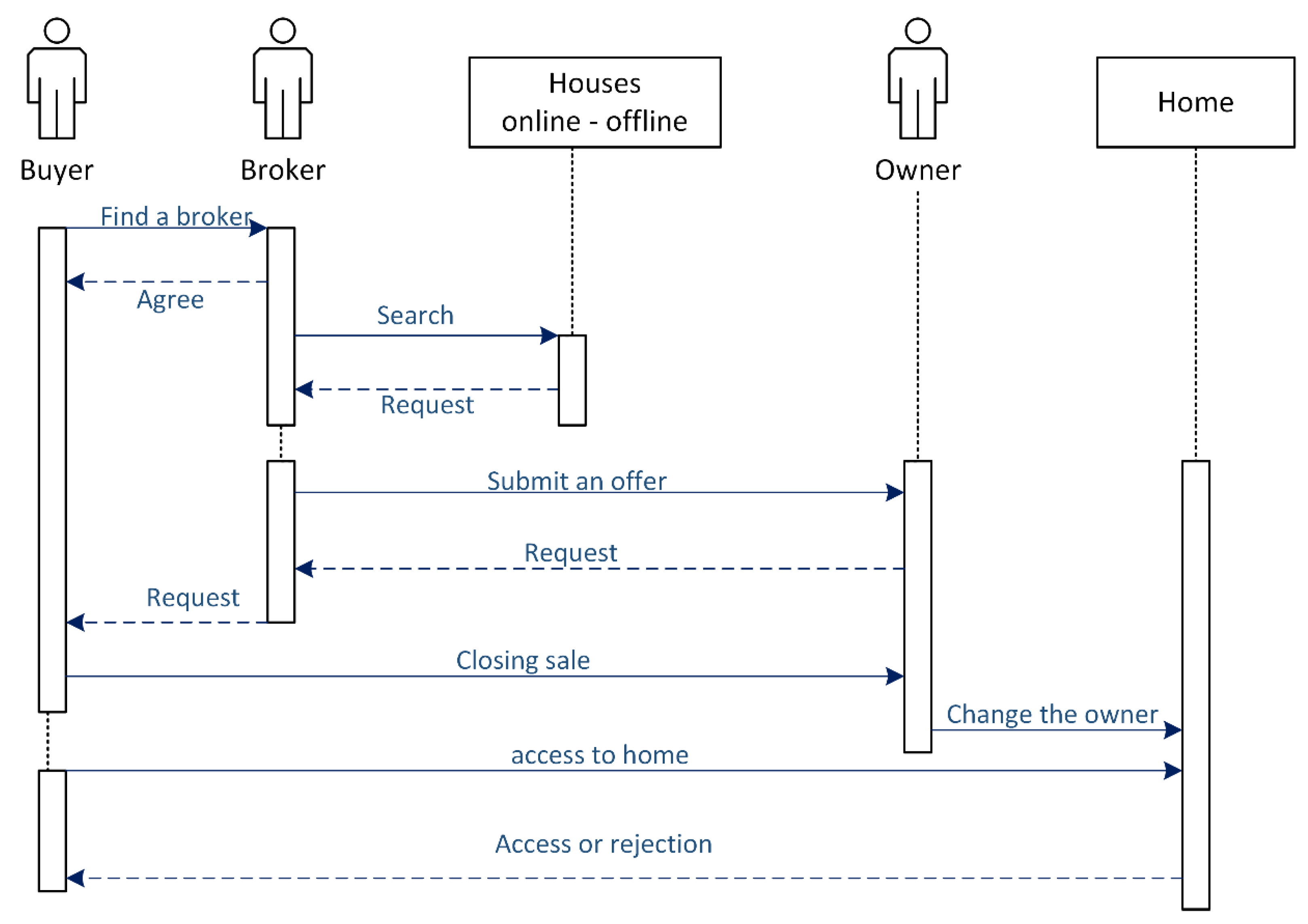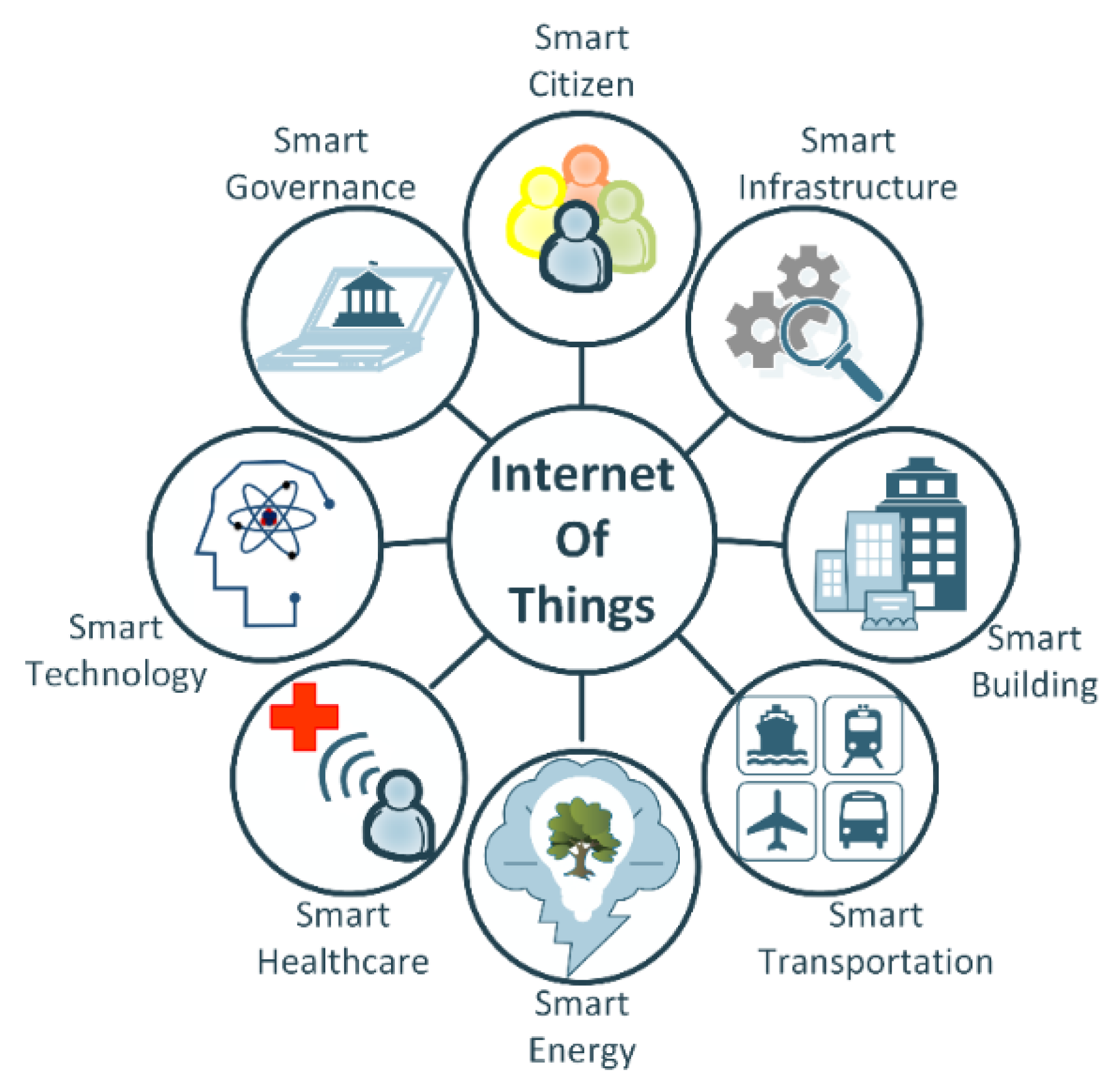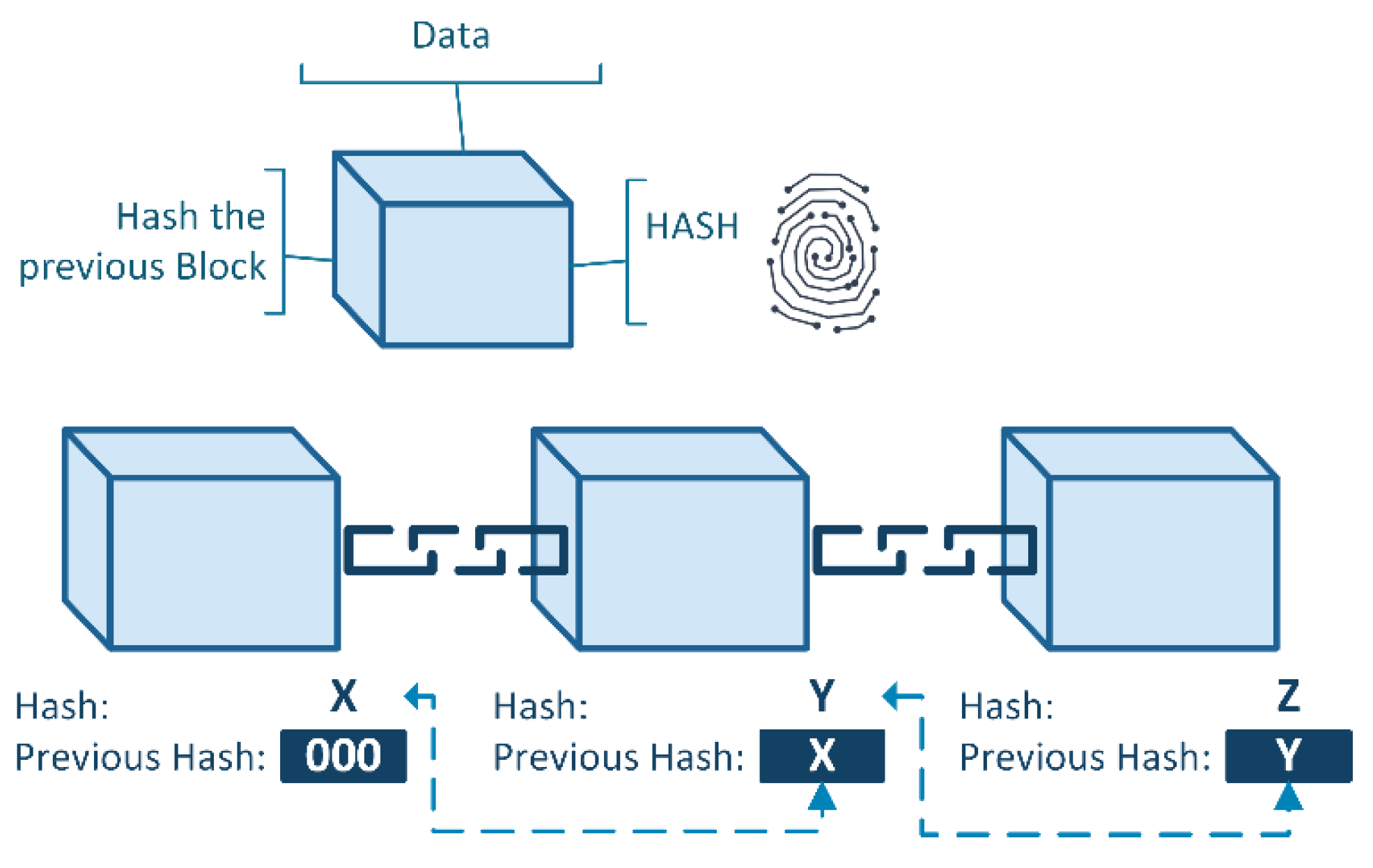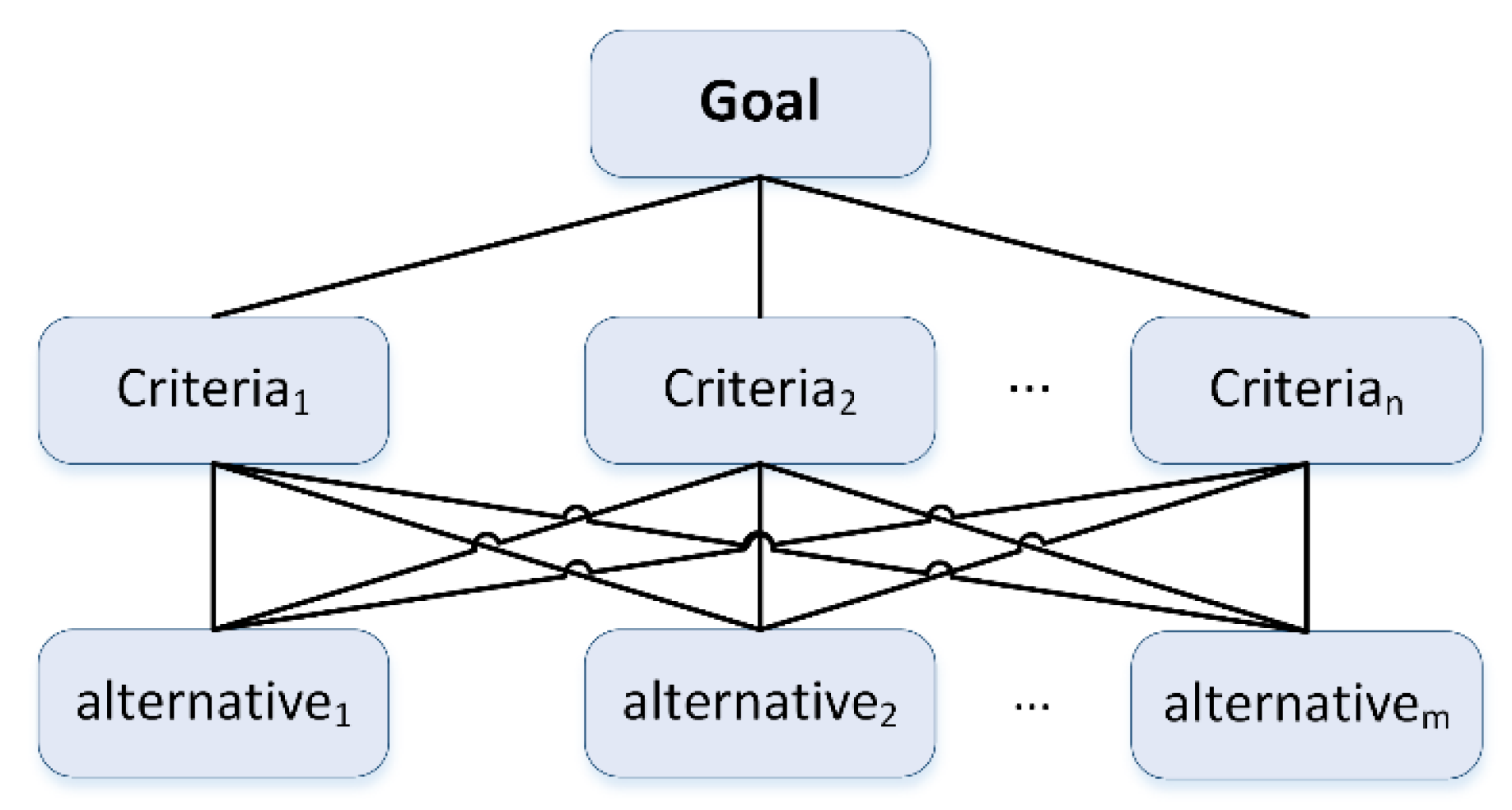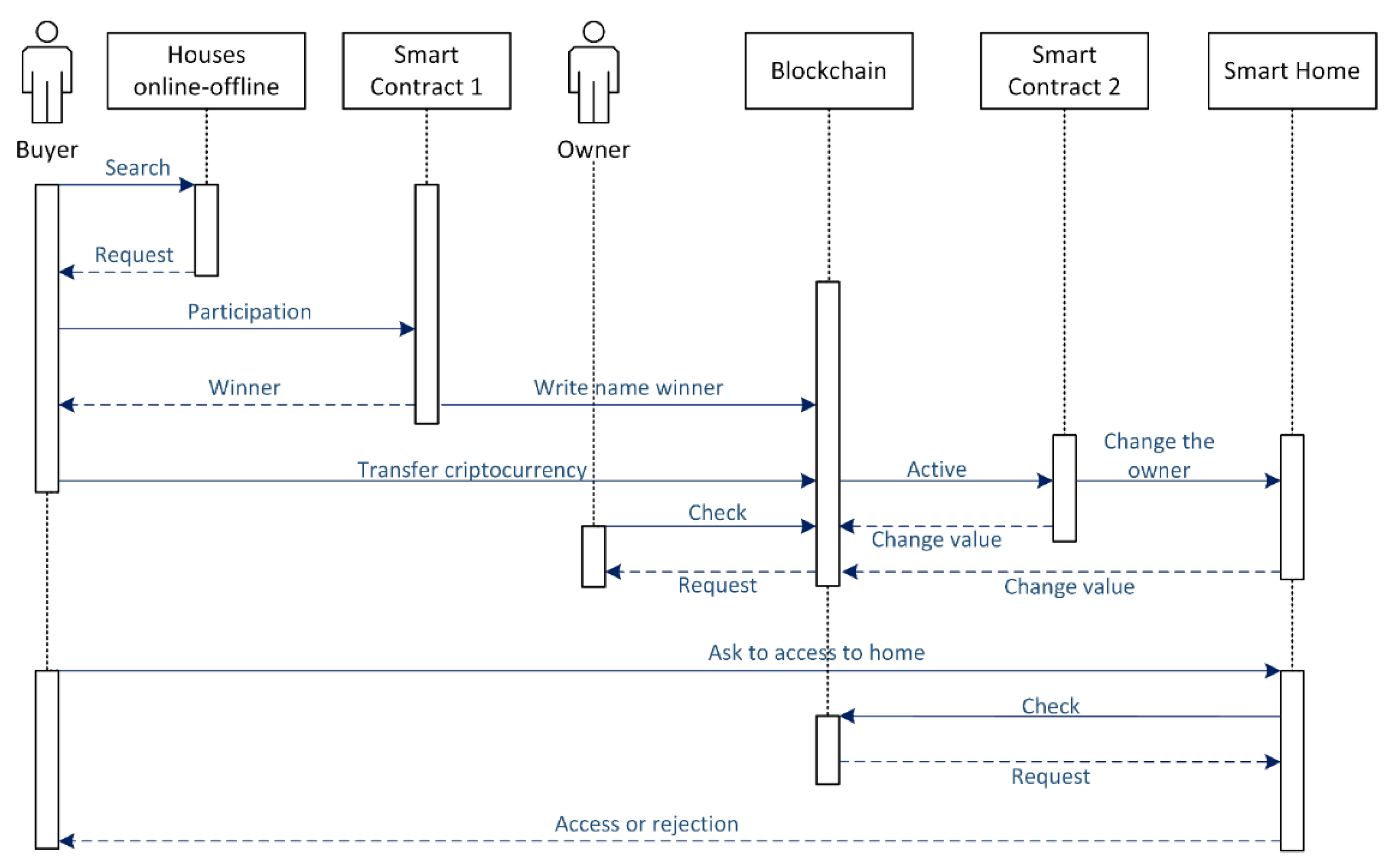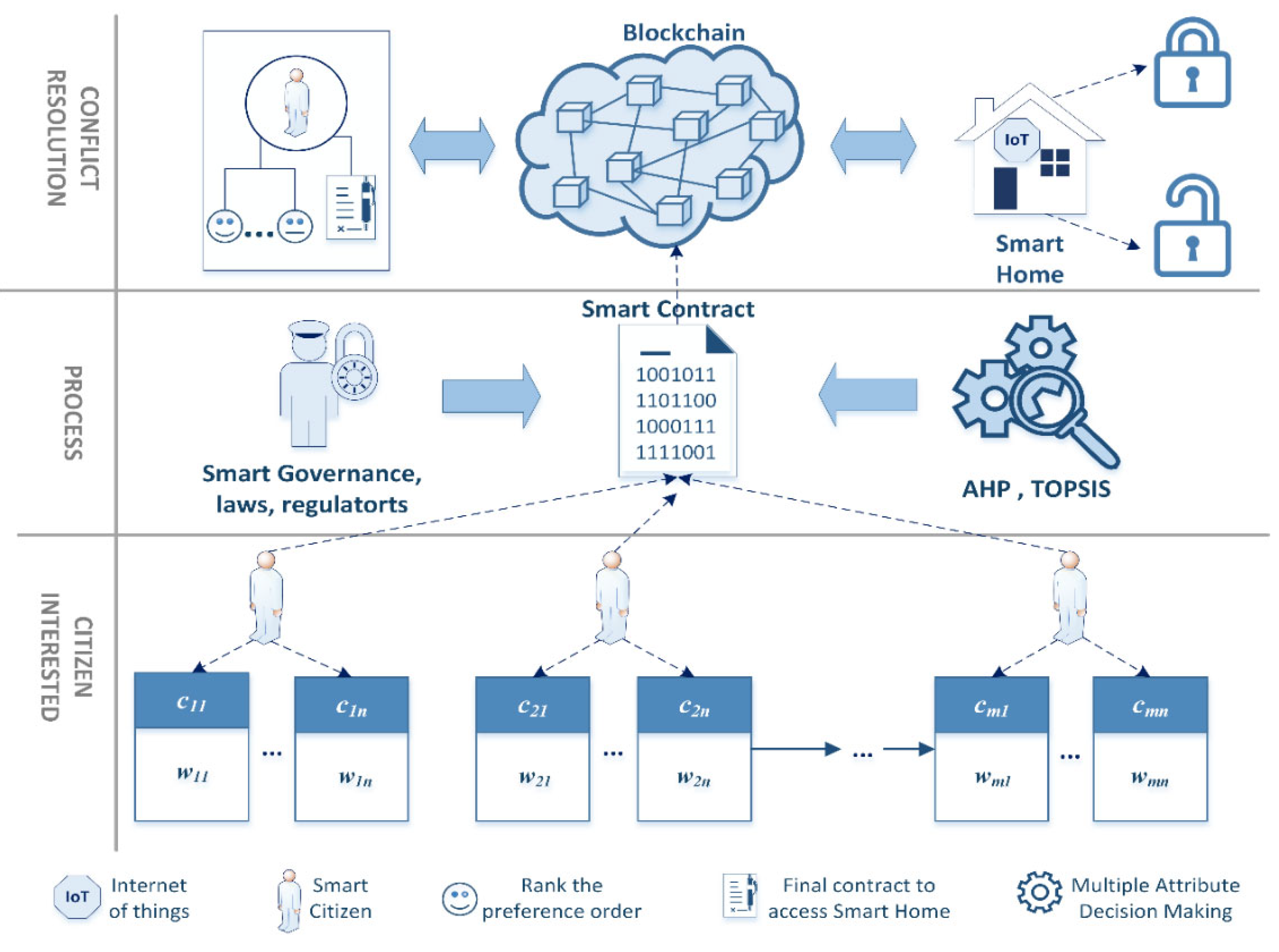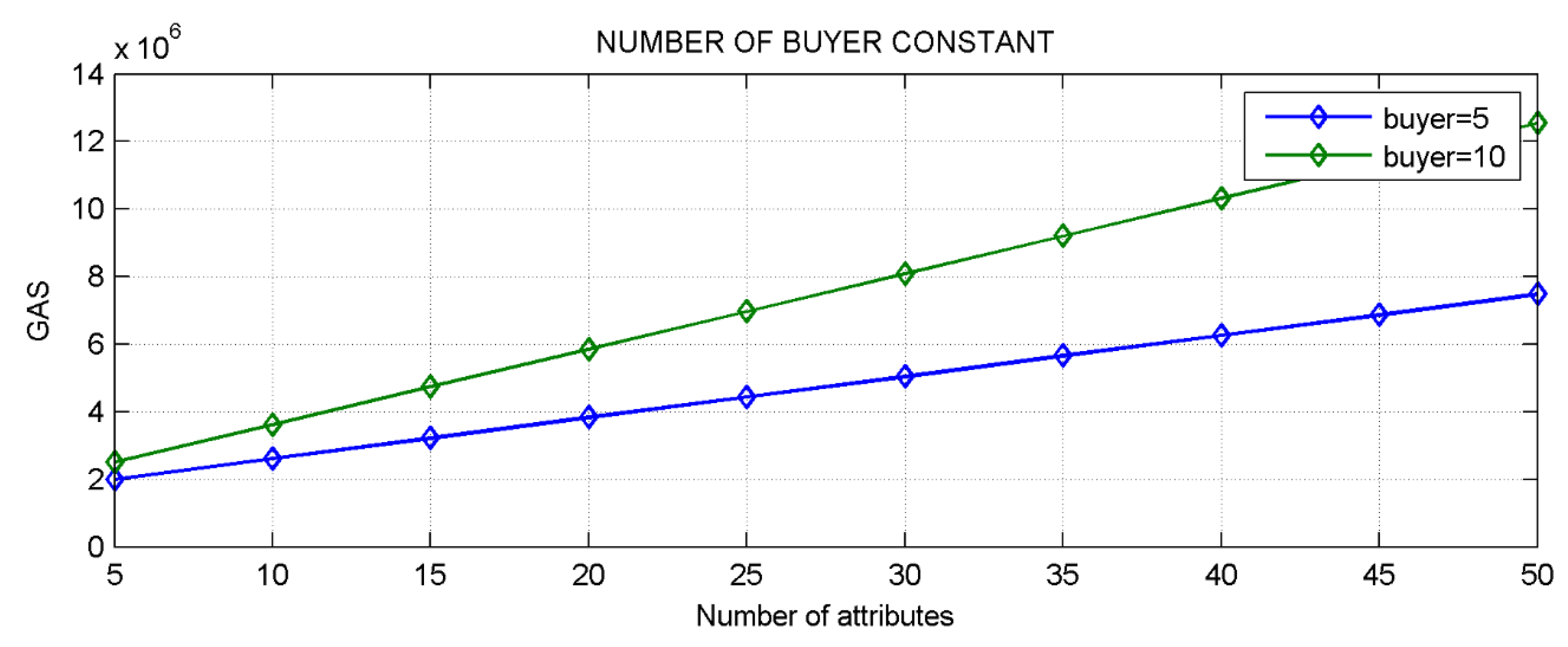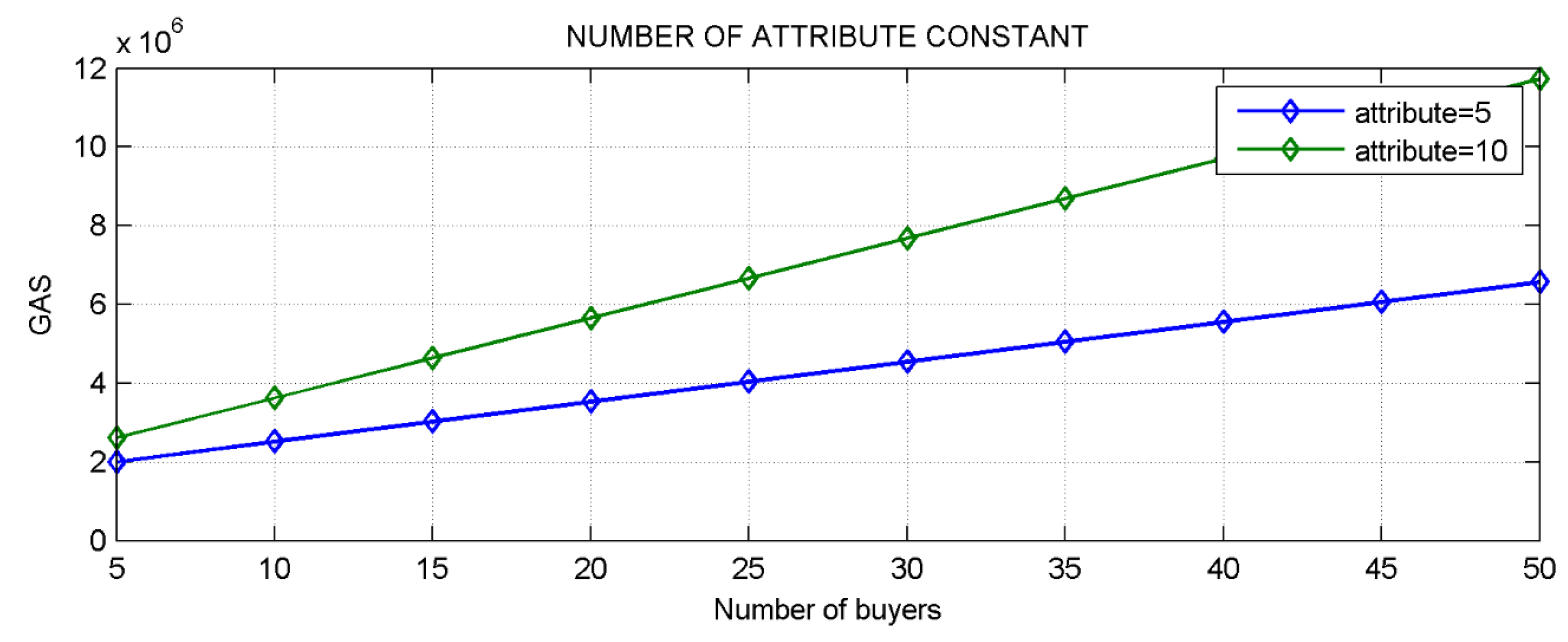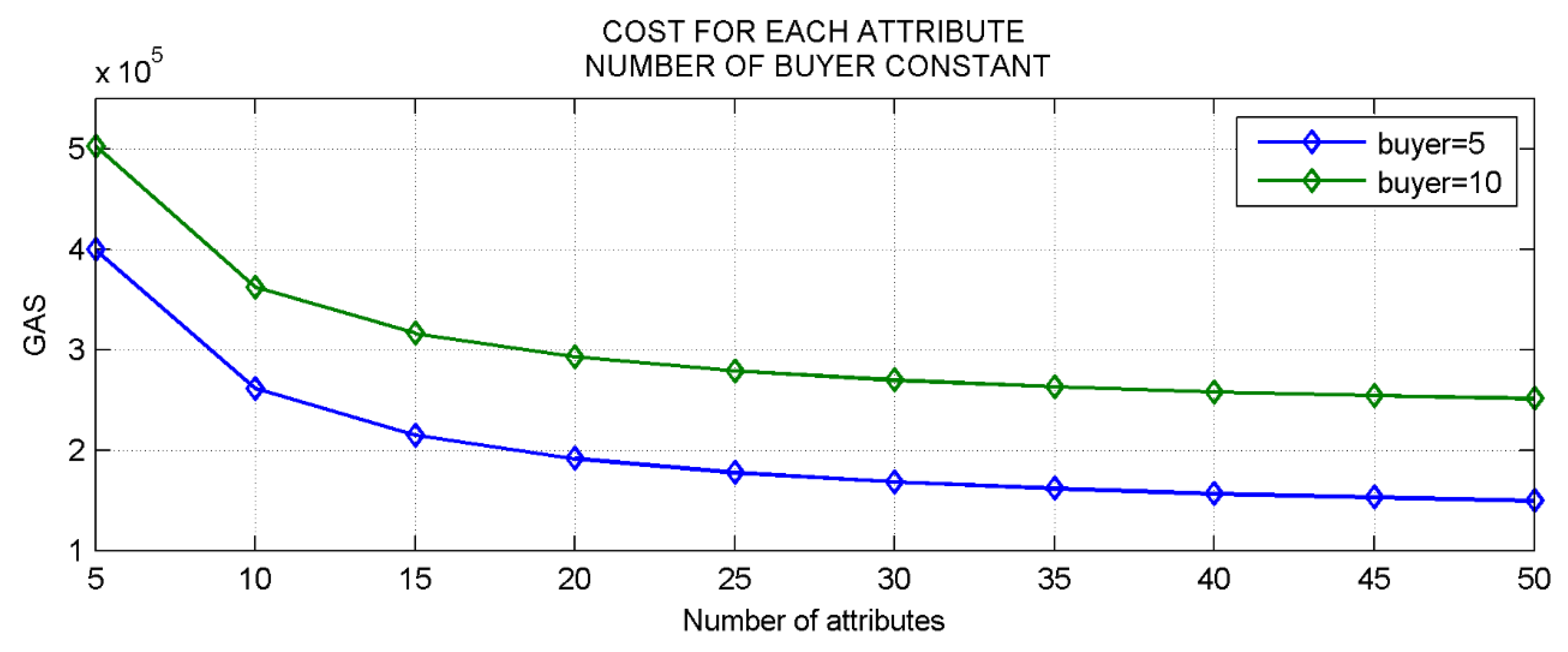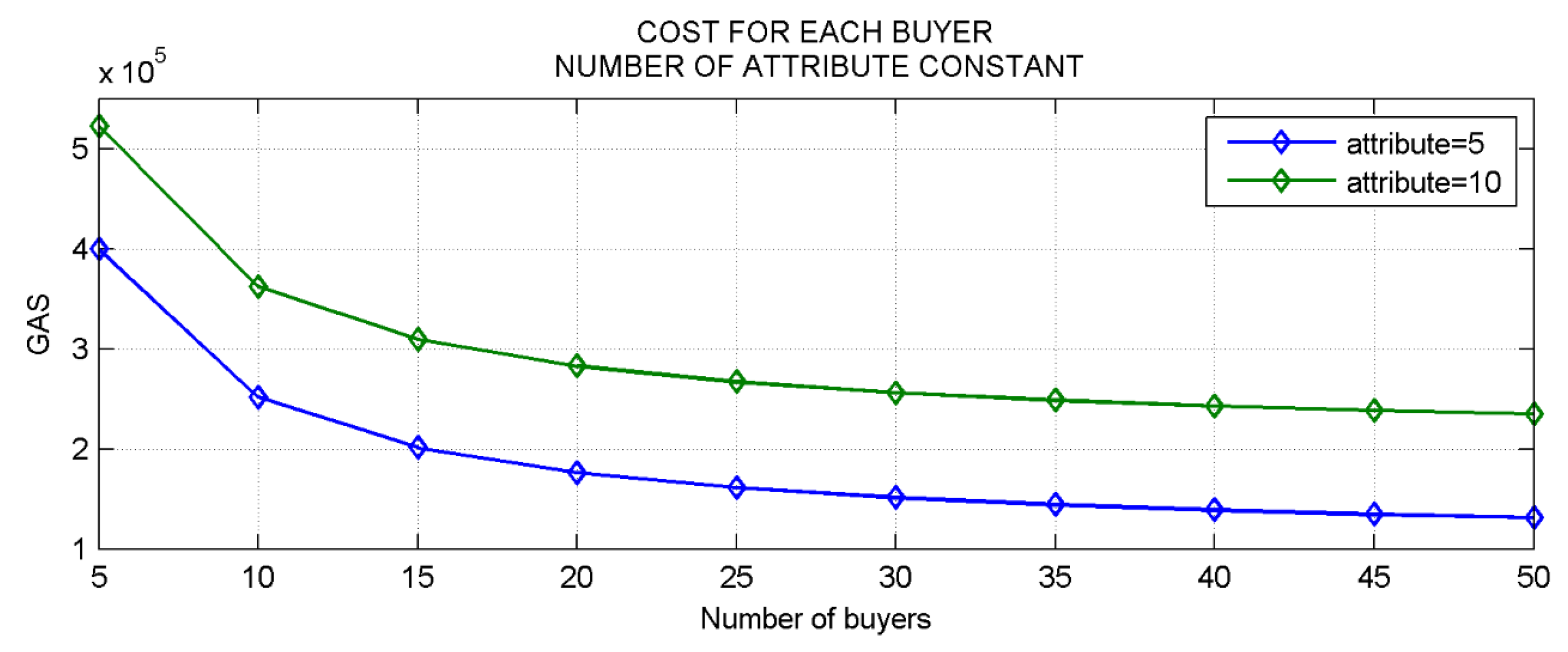1. Introduction
We accumulate tangible and intangible items that we consider personal property throughout our lifetimes. Something noteworthy about these items is that their owners can change throughout their lifetime. According to the Merriam-Webster dictionary, a property is “the exclusive right to possess, enjoy, and dispose of a thing”. We can also determine that property is a legal relationship by which the owner is legally entitled to possess, use, and dispose of a certain thing that constitutes the object itself. Therefore, with the rise of cities, buying and selling, also known as “real estate”, has become one of the most significant markets in various countries; indeed, this market is so essential that it serves as an economic indicator for a country. As a result, the lessons learned from “the Great Recession” [
1] and the impacts of “housing bubbles” [
2] on the economies of some developed countries are taken seriously today. Another important factor is the growth and development of cities. Society has grown and grouped together by the affinity to build cities. Many of them are the most significant in the world because of their economy, culture, attractions, etc. The lowering of “maternal mortality” [
3] and global demographic expansion in recent decades, particularly in major cities, has necessitated a more effective management of existing resources. “The world’s population continues to grow, albeit at a slower pace than at any time since 1950” [
4]. With advancements in technology, many objects around us have become smart, from smartphones to smart vehicles to smart houses. This has pushed us to consider the larger picture and coin the phrase “smart world” [
5,
6].
The smart world is made up of smart cities, and that is the focus of this research. Several projects have contributed valuable research in order to delineate the construction of these cities, which can provide us with many advantages and minimize those that, until now, we find in our daily life [
7,
8], such as pollution of the environment [
9], excessive waste of energy [
10], waste of drinking water [
11], etc. Another major issue that we face today is the lack of safety and security in terms of financial fraud [
12]. Although there are other forms of security, this study focuses on the security of purchasing and selling “real estate”, since the prevalence of fraud in this sector [
13] could take away all or a large portion of the money that an individual accumulates in order to achieve their goal of owning a home. For the same reason, selling or purchasing a home might be more complicated and costlier than anticipated [
14]. This includes having to employ third parties, such as attorneys for the legal aspect of home buying, technicians to inspect the present status of the property, and, of course, a mortgage assessment to determine the market worth of a property. Many individuals elect to employ a corporation or “real estate broker” who is responsible for providing mediation services in real estate buying, selling, or rental transactions, as well as other legal rights and duties [
15,
16]. With this kind of intermediary, transaction costs and time increase, and government bureaucracy exacerbates the issue in many countries.
In an ideal world, everyone would know all there is to know about the property they are purchasing or selling, including its commercial worth and features. In addition, individuals should be able to observe the complete history of the property in question, from its construction to the current moment of purchase or sale, in real time. This is where this research gains traction; by utilizing a tool such as a blockchain, we can minimize or avoid the complications associated with the acquisition and selling of real estate. This instrument, along with “smart contracts” is an essential component of present and future cities. Our research uses two decision-making methods to achieve the sale of a smart home, with Authentication, Confidentiality, Integrity, Availability, Access Control, Encryption, Audit, as well as the non-interference of third parties in the transaction. We can refer to a “smart house” as any “home” that is connected to the Internet, monitored with security cameras, or controls the refrigerator, lighting, air conditioning, etc. However, a “smart house” should be able to identify who is and is not the owner in order to allow complete access to all of the services stated above, or, failing that, to block any access and alert the authorities in the event of an intrusion. This is the concept created in the following study, imparting intelligence to a “home” so that it may consult the blockchain and authenticate its owner. The use of blockchains in real estate provides many advantages that previously would have required large and complex computer systems, in addition to the intervention of many external control agents.
Section 2 presents related works regarding blockchains, smart contracts, and real estate.
Section 3 provides a background regarding the principal elements to our work.
Section 4 addresses the research approach in detail.
Section 5 outlines the results of implementation. Finally,
Section 5 concludes the study.
2. Related Work
Many researchers have investigated blockchain and smart contracts, as well as their numerous uses in industry, health, and education [
17]. The characteristics it possesses in terms of security [
18,
19,
20], privacy, traceability, and autonomy, without the interference of third parties, make it a crucial technology in the field of information and communication.
The research in [
21] provided a study on blockchain security and privacy, providing an overview of all of the qualities of a blockchain, particularly its robustness in terms of cryptography. A study that used a zero knowledge proof algorithm to prevent false documents and duplicate contracts with the implementation in blockchain was presented in [
22]. A review of the literature outlining potential future study areas in the field of blockchains and smart contract applications to secure the Internet and IoT was demonstrated in [
23]. According to the findings of this survey, Ethereum is the most commonly used cryptocurrency for building security solutions. An analysis of the potential of blockchain transactions, as well as some legal implications, was outlined in [
24]. A review of previous research in smart real estate and the link that exists between them, as well as a smart contract design that accommodates the fundamental functions of a contract, including the process of forming and terminating a contract, was presented in [
25].
In [
26], the authors concluded that smart contracts boost trust in the real estate industry, thus enhancing the transaction process. A full study that demonstrated the use of neural networks in conjunction with blockchains to carry out secure real estate transactions was presented in [
27]. A proposal for and implementation of a smart contract for access to the IoT, with its respective permits and penalties, was shown in [
28,
29]. A decentralized methodology for controlling low-cost IoT devices was presented in [
30]. A study that presented a prototype in which the sensor collected humidity data from the environment and stored it in the blockchain, in addition to a cost comparison in GAS (Element that is used to execute the smart contracts in Ethereum). The theoretical research presented in [
31] proposed a model for the authorization and management of IoT devices in smart homes with Ethereum, demonstrating the GAS limits used in transactions as a disadvantage. In [
32], a novel method for access control to IoTs in Ethereum, based on access tokens, was presented, providing greater flexibility to the management of the IoT in addition to the cost in GAS is in the standard ranges. This method was only theoretical and has not yet been tested in a real environment. The study in [
33] concluded that there is still a long way to go in terms of the full implementation of blockchain technology in the real estate market, although many countries have already implemented pilot tests. Full implementation will depend on the trust generated by blockchains in an area as continuously changing as the real estate market. Even so, the benefits offered by this technology do not cease to amaze. The resume is showed in
Table 1.
3. Background
Blockchain technology is still a relatively new concept in real estate, although the sale of real estate using blockchain technology has already been successfully tested in Ukraine. At the moment, the smart real estate sector is still building, with many IoT devices installed, so there is a large amount of data in systems and databases. Implementations can become complex and require multiple resources for the system to be successful. There may also be mistrust from stakeholders towards adopting new technologies. Improving efficiency and transparency in real estate transactions has always been an objective of governments, so there have been some interesting proposals [
34]. The legal issue is another aspect that becomes a limitation in the implementation of blockchains in real estate, since it is not dependent on third parties [
24]. Studies have analyzed the implementation of blockchains from the legal point of view of the European Union (EU) and the possible implications that its implementation would have for traditional intermediaries, such as the real estate agent, the notary, land registry, and others. The general business process of buying a property is shown in
Figure 1, in which we can see a buyer hiring the services of a broker or a real estate company that can help find and buy the desired property. It is this process which is intended to improve with the use of blockchain.
3.1. Smart City
The term smart city tells us: the “smartness” of a city describes its ability to bring together all its resources, to effectively and seamlessly achieve goals and fulfill the purposes it has set itself [
35]. Many institutions and authors have tried to find a definition, and, for this reason, they propose that the term smart city be seen from the perspectives of “technical infrastructure, the application domain, system integration and data processing” [
36], or urban governance and planning.
Faced with a growing population and rapid urbanization, smart cities have become a solution to mitigate the daily problems that arise and affect the inhabitants. A smart city should have the ability to intelligently manage all of its resources, energy, water, transportation, etc. [
37], as well as treating solid waste [
38], identifying driving-violations [
39], or controlling the electrical system [
40]. It indicates that the components of a smart city are: smart infrastructure, smart buildings, smart transportation, smart energy, smart health care, smart technology, smart governance, smart education, and smart citizens. These subgroups also group within important elements for the functioning of a smart city.
We can see that, in the
Figure 2 [
37], another very important part of a smart city is Big Data; each component of the smart city depends on information to make decisions, i.e., sensors, IoT devices, citizens, etc. These generate a lot of information every day. All this valuable information is processed and serves as an important element for decision-making.
3.2. Blockchain Technology
A blockchain is similar to an accounting ledger, but this book is distributed and decentralized, and it can be replicated and shared by all members of the network. It continually registers transactions, agreements, contracts, and sales by its users, with the particularity that these are non-reversible transactions. The potential of this tool allows a peer-to-peer transaction to be carried out without the intervention of any intermediary.
The security of blockchain technology is based on its strong cryptography, where an attacker would have to possess 51% of the systems to surpass the hashing or (HASH) power of the target network. “To modify a past block, an attacker would have to redo the proof-of-work of the block and all blocks after it and then catch up with and surpass the work of the honest nodes” [
41]. Each block has mainly data (it can store any type of data), its own HASH and the HASH of the previous block. In this way, a chain of blocks is formed, as can be seen in
Figure 3.
The HASH is a value that is generated in a mathematical function that has as its input a chain of letters or numbers, and produces another alphanumeric chain of fixed length. The function of this unique HASH is to identify the block and its contents, so a change in the content of a block would also generate a change in its HASH. As each block contains the HASH of the previous block, if someone were to change the data of a single block of the blockchain, the chain would be invalid. This is one of the key advantages in terms of security.
3.3. Smart Contract
The term smart contract was coined in the 1990s by cryptographer Nick Szabo. A definition given by the International Business Machines Corporation (IBM) tells us: “Smart contracts are simply programs stored on a blockchain that run when predetermined conditions are met. They typically are used to automate the execution of an agreement so that all participants can be immediately certain of the outcome, without any intermediary’s involvement or time loss. They can also automate a workflow, triggering the next action when conditions are met”. Smart contracts can be used for any type of transaction that requires an agreement between parties, such as financial transactions and crypto currencies [
42]. One of the main advantages is it provides better security and transparency for common contracts; it is also economical, since it is not necessary to pay the fees of a lawyer or third parties when it is executed, since it is written like a computer program. This smart contract has the same content as a traditional legal contract, but, being a program, it takes the input information, processes it, and gives a response, depending on the input conditions. Obviously, the possibility of a dispute is eliminated since the parties involved must accept the final result of the process in which they participated [
43].
Another very important term regarding smart contracts are smart properties. A smart property is a property controlled by digital means. An example of smart property is the cryptocurrency Bitcoin; this is controlled through the blockchain, through contracts [
44].
3.4. Analytic Hierarchy Process (AHP)
AHP is a means of decomposing a complicated problem into a hierarchy of simpler and more manageable sub-problems [
45]. These sub-problems are usually called decision factors and are weighted according to their relative dominance to the problem. The bottom decision factors are actually the solution alternatives (
Figure 4).
AHP selects the solution alternative with the largest synthesized weight. AHP performs following four main steps:
Structuring a problem as a hierarchy of multiple criteria is the first step of implementing AHP. The decision factors of the problem are identified and inserted into the hierarchy. The overall objective is placed at the topmost node of the hierarchy. The subsequent nodes present the decision factors. The solution alternatives are located at the bottom nodes. The second step is the evaluation stage, where each factor is compared to all other factors within the same parent. The comparison results within each parent are presented in a square matrix. The pairwise comparisons are finished through answering the question: “Which of the two is more important?” and, second: “By how much?”. A fundamental 1 to 9 scale is used in AHP to allow the decision-maker to express the strength of preference based on his intuition, experience, and knowledge [
46]. Thus, we obtain a reciprocal matrix where the entries are symmetrical with respect to the diagonal. The strategy decomposes the original problem into many smaller sub-problems and deals with the latter [
47]. The notation for the AHP method is in the
Table 2.
Formally, the pairwise comparisons are collected into a pairwise comparison matrix,
According to Saaty’s theory, each entry is supposed to approximate the ratio between two weights.
This means that, if the entries exactly represent the ratios between weights, then matrix
A can be expressed in the following from:
For the eigenvector, we take matrix
A, for which entries are exactly obtained as ratios between weights, and multiply it by w, which obtains:
We know that a formulation of the kind Aw = nw implies that n and w are an eigenvalue and an eigenvector of A, respectively. Moreover, by knowing that the other eigenvalue of A is 0, and it has multiplicity (n−1), then we know that n is the largest eigenvalue of A. Hence, if the entries of A are ratios between weights, then the weight vector is the eigenvector of A associated with the eigenvalue n.
3.5. Technique for Order of Preference by Similarity to Ideal Solution
The Technique for Order of Preference by Similarity to Ideal Solution (TOPSIS) is a multi-criteria decision analysis method developed by Hwang Ching-Lai and Yoon Kwangsun in 1981. It is a decision method based on choosing between different alternatives that have the shortest geometric distance from the positive ideal solution and the longest geometric distance from the negative ideal solution. It should be mentioned that the positive ideal solution is the sum of all the best values for each attribute, and, conversely, the negative ideal solution is the sum of all the worst values of each attribute. Given a set of
m alternatives and a set of
n criteria with a set of
n weights, we have a matrix
. The notation for the TOPSIS method is in the
Table 3.
The TOPSIS procedure is performed in six stages, as follows [
48]:
4. Approach
The methodology proposes the use of two decision-making tools in the selection of buyers (citizens) which evaluates the different alternatives and helps the decision-maker (smart governance) to select the citizen who will be awarded the smart home. For this methodology, the AHP tool is used to analyze the structure of the buyer selection problem and to determine the weights of the criteria or attributes, and the TOPSIS tool is used to select buyers (citizens) and obtain the final classification of buyers. The AHP determines the weighted weights of the decision criteria based on a set of already defined criteria and the preferences of the decision-maker (smart governance) on each of these, which helps to reduce the complexity of decisions. TOPSIS chooses the alternatives (buyers) that have the shortest distance from the ideal solution and the farthest distance from the negative-ideal solution. This tool takes as the input the values obtained from the evaluation process for each criterion together with its weight.
AHP allows you to convert qualitative values into quantitative ones, compare preferences between criteria, and calculate criteria weights across preferences. While TOPSIS allows you to find the best alternative using a simple mathematical process, and also calculates the distances of a set of alternatives against an ideal and negative-ideal solution; in this way, the number of alternatives is not a problem.
A smart city should try to be fair and equitable in dealing with citizens or, at least, give them the same opportunities. We must mention that, with this work, we do not intend to question the free supply and demand that governs the world economy. We propose a model for a smart city in which a group of potential buyers (citizen) enters a selection process, and the highest bidder acquires the desired property, as shown in
Figure 5.
Following the steps:
A buyer searches and finds the house. The buyer searches online or offline for the house he wants to buy. Here, the Smart city can intervene, offering its respective properties.
Buyers (citizens) join in the group, every buyer has attributes; this is the most important part because here the proposed model is focused and it is assumed that there are “n” interested in acquiring a certain property. In the current model, shown above, (
Figure 1) a merely economic negotiation is made. If both parties agree, the deal is closed and the regular procedure indicated by law is followed. However, in our work, this is a model where money, age, behavior, as well as the environment, etc. are factors that influence the acquisition of real estate. A smart home should be able to decide who will be its owner, avoiding or reducing bureaucracy, corruption, abuse of power, etc.
The smart contract decides the winner. A smart contract will be generated without the intervention of third parties that may influence or modify the result (
Figure 6). Upon fulfilling certain criteria, the ranking will determine the entry requirements for the next smart contract.
The citizen winner transfers cryptocurrency and the smart contract records his/her name in the blockchain (change the owner). Another smart contract should read the name of the person authorized to make the payment; it should only accept payment from that individual and reject any other. Once the transaction is finished, the data of the new owner is written into the blockchain, complying with the laws in force in the country, giving full and unrestricted access to all services to the new owner.
The new owner can access his/her home. The new owner requests access to the property, this home acts as an IoT, receives the request, reads the blockchain, and approves or denies access to the individual.
4.1. Immutable Registration of Buyers
The immutable registration of the buyers in a smart city will ensure the privacy of all possible buyers that want to buy a home for living in using smart contracts. The buyer registration will be conducted in the blockchain, where he/she will use the necessary documents to prove their identity, and a special key password will be stored off-chain. To maintain data privacy and anonymity on-chain, this research will use a Merkle Proof that uses an underlying cryptography hash function. The hash algorithm is going to automatically generate the hash of the buyer’s identity (BI) and the secret key password (KP), . This useful technique has been used before by other researchers as a smart city tool. When the hash is generated, it will become part of the blockchain and can also generate a QR code (Quick Response code) for the buyer. It necessarily stores: the transaction hash, the contract address, the BI, and the PK, that will be later shown to the seller to prove his/her identity. All these process actions are processed by using smart contracts implemented in solidity (using Ethereum) through the blockchain.
The map structure tracks all the participants in the registration and validation processes. The buyer sends the registration to show their intention to buy and all of their information will be stored as an address that signs the registered transaction. The register functions are also associated with other factors, such a system that tracks if a person does not belong to the black list, the seller, and the AI of the smart city, which can all be controlled by smart governance (Algorithm 1, line 7).
| Algorithm 1 Smart contract: Buyer Registration |
| 1: |
State: |
| 2: | address_purchaseIssuer |
| 3: | MAP (address SmartGov, bool Inserted) _SmartGov |
| 4: | MAP (address Seller, bool inserted) _Seller |
| 5: | MAP (address Buyer, bool inserted) _Buyer |
| 6: | MAP (bytes BuyerHash, address Buyer)
_RegisteredRequest |
| 7: | Function Modifiers: -WhiteList; … |
| 8: | …… |
| 9: | Function RegisterBuyer |
| 10: | Input: msg.sender. buyerHash |
| 11: |
Output: - |
| 12: |
Modifiers: - |
| 13: |
Begin: |
| 14: | _Buyer [msg.sender] ← true |
| 15: | _RegisterRequests [buyerHash] ← msg.sender |
| 16: |
End |
4.2. Determination of Weight with AHP
First, we need to identify some important actors in our model, these will be necessary to develop the main concept. The principal actors involved in the whole process are the following:
- (a)
Buyer: This is the actor who is willing to acquire the real estate.
- (b)
Seller: This actor is the owner of the real estate and is willing to sell it.
- (c)
Smart Governance: This actor can be a group that represents the government.
As a first step, it is suggested that the Smart Governance defines a group of experts to propose the criteria to be evaluated in citizens who want to acquire real estate. These criteria are of vital importance as they will help to determine a standard for eligible buyers. Each criteria will be assigned a weight and the importance of each criteria will be ascertained from its weight.
In [
49,
50], the authors described the scale of citizen participation based on the work of Arnstein, Sherry (1969). The roles that a smart citizen fulfil are: Citizen Power (Leader, member, decision-maker, maker, Co-creator), Tokenism (proposer, participant, tester, player, recipient), Consumerism (resident consumer), Non-participation (patient, learner, user, product, data-point) [
51]. Another study also proposed a framework called “citizen participation in smart city” inclusive of: Citizen democratic participants (Citizen’s selection, agreement on the goals of the smart city strategy, correlation between participation activities and achievement of goals), Citizens as co-creators (Direct interaction, Living lab, online platforms), and Citizens as Information Communication Technology (ICT) users (infrastructure, open data) [
52]. This focused on the reputation of a smart citizen, for example, when a new user joins the community, his or her reputation is voted on by other users in the same community. The notation to elements is in
Table 4.
It is in this way that Smart Governance will choose
criteria for a citizen to be part of a community (smart city). We will name this set of “criteria” as
. These
n criteria are the elements of a criteria matrix where they will be compared in pairs using the Saaty’s scale [
53] (
Table 5).
The pairwise comparison of criteria gives us a square matrix
(Equation (1)). Where
represents the importance of the criterion
over the criterion
(Equation (2)) in the matrix
. Finally, we have the matrix A, (Equation (3)), and we can obtain the eigenvector
W (Equation (4)). This is shown in
Table 6.
W is the weight vector,
and
4.3. Selection and Award of the New Owner
Once the weights of each criterion have been obtained by the AHP method, the TOPSIS method will be used to determine the selection of the new owner. This point we define as: B, the set of m potential buyers where each b is a buyer (citizen) that has been associated with the set of criteria defined in the previous point , .
For this, we must define three simple but important things: Columns (number of criteria or attributes), Rows (number of buyers), Vector (weight for each attribute). As already mentioned in the determination of the weight with AHP, the attributes are important and are evaluated by smart government; these attributes can be: age, number of members in the family, profession, economic situation, etc. With this, we will form matrix M, and the first step (Equation (6)) will be carried out; we will then obtain a new matrix r (
Table 7).
Then, we apply Equation (7), where the vector of weights plays an important role. A third step is to find an ideal and negative-ideal solution, (Equations (8) and (9)) (
Table 8).
The fourth step is to calculate the separation measures (Equations (10) and (11)). The fifth step is to calculate relative closeness to the ideal solution, (Equation (12)) and, finally, we obtain the rank of the order of preference. This last step gives us the chosen citizen to be awarded the smart home (
Table 9).
4.4. Safe Place Administration Distributions
After registration using easy validation and identity verification, leading to the final selection, the buyer has already validated their intention to buy without any face-to-face contact with other participants. For the distribution of the real estate to the buyer, when they have already been approved to receive the property, a smart contract is generated to conduct the distribution process.
The first step in the process is the validation of the buyer’s identity before delivery. It is performed by the seller using the buyer’s registration, for example, a QR code that contains the hash of the blockchain transaction, the address of the smart contract, the hash of the personal identification number, and the hash of the password key. The smart contract that manages this process is presented (Algorithm 2). First, the validation of the buyer using the information of the QR code and the data registered in the blockchain is confirmed (lines 4–10). This is achieved in the chain by offering the two hashes (the BI hash and the PK hash) as inputs and checking the obtained root hash against the buyers’ record stored in the chain. Both the buyer and the smart governance must acknowledge the management in the chain (lines 11–22) by signing the associated blockchain transaction. When both firms have been registered, the property lot size is reduced and the association between the Buyer Hash (BI) and the property lot is registered (lines 19–20). Any buyer who has received their place to live can record their feedback and prioritize buyers who were unable to purchase the home. By directly registering the priority on the chain, the information is difficult to change and censor. The buyer will sign a blockchain transaction that is authenticated and authorized (line 6), verified with the managed house from the specified place (line 7), and correlated with reports from the other buyers. As a result, the registered priority is stored in a string as a transaction (line 8).
| Algorithm 2 Smart contract: Safe living place distribution |
| 1: | State: |
| 2: | MAP (bytes Place_LID, MAP (bytes hashBI, MAP (string role, address Participant))) _administrationESignatures |
| 3: | MAP (bytes hashPI, bytes location_LID) _administratedLocation |
| 4: | Function checkIdentity//check participant identity |
| 5: | Input: hashBI, hashPasswordK, hashLevelStatus |
| 6: | Output: validationStatus |
| 7: | Begin: |
| 8: | hashBuyer ← keccak256 (concat (hashBI, hashPasswordK,
hashLevelStatus)) |
| 9: | validationStatus ← _registerRequest (hashBuyer) |
| 10: | End |
| 11: | Function signDistributionPlace |
| 12: | Input: msg.sender, PlaceId, hashBI |
| 13: | Begin: |
| 14: | IF msg.sender is SmartGov THEN |
| | _administrationElecSign[PlaceId][hashBI][SMARTGOV] =
msg.sender |
| 15: | ELSE IF msg.sender is Buyer THEN |
| | _administrationElecSign[PlaceId][hashBI][BUYER] =
msg.sender |
| 16: | END IF |
| 17: | IF_dministrationElecSign[PlaceId][hashBI] [SMARTGOV] exists
&& |
| | _administrationElecSign[PlaceId][hashBI] [BUYER] exists
THEN |
| 18: | _administrationElecSign[hashBI] = PlaceId |
| 19: | _LocationNumber[PlaceId].size =_PlaceNumber[PlaceId].size-1 |
| 20: | END IF |
| 21: | End |
Most importantly, the permissions of the blockchain should be controlled by the public authority. In this way, it can be ensured that real estate transactions meet the minimum legal standards. The consensus should be administered by the government (smart government) where the public authority, regulators, laws, etc., can validate any change in the blockchain. All transactions should only be authorized when they meet the legal requirements of the country. The revision of the contract, control of the price of the property, etc., are attributions of the governments. Access to the registry for the purchase of real estate and the entire process described in this work must be through the official and legal services offered by the government. Some proposals to improve security in the blockchain and its encryption [
54,
55], together with consensus mechanisms [
56,
57], can also be applied.
5. Results
This section provides technical discussions and their limitations, Ethereum transaction prices, as well as future perspectives for the research topic. The Remix platform is a browser-based compiler, in which smart contracts can be built with Solidity language. The graphs and plots were also designed using the functions in MATLAB R2019b. The simulation environment is in the
Table 10.
A major problem encountered when proposing a model is the economic cost that the model entails. Despite the great social impact it may have and the service it may offer to governments, companies, citizens, etc., the economic aspect is a major concern. There is economic viability when the two most important factors (attributes and buyers) vary according to the requirements of the smart city. The tests that were carried out considered two important factors. One of them was the attributes that would become the columns and the buyers identified as rows. Both in an array that could be evaluated by the method.
Figure 7 shows that if the number of buyers remains constant (buyer = 5 or buyer = 10) and the number of attributes starts to arithmetically grow, then the GAS consumption linearly grows. If we take the first and final values, we can see the increase in terms of GAS is 499.4% (buyer = 5) and 374.5% (buyer = 10). Calculating the ratio of both lines, we obtain the ratio of the first (5 attributes), a:b = 0.795, and the last ratio (50 attributes), a:b = 0.596.
On the other hand,
Figure 8 shows that if the number of attributes remains constant (attribute = 5 or attribute = 10) and the number of buyers begins to arithmetically grow, then the GAS consumption linearly grows. If we take the first and last value, we can note that the increase in terms of GAS is 499.1% (attribute = 5) and 328.8% (attribute = 10). Calculating the ratio of the first (5 buyers), we obtain a:b = 0.764, while the last ratio (50 buyers) is a:b = 0.559.
Figure 9 presents the cost in terms of GAS for each attribute when the number of buyers is constant; the behavior is exponential. Comparing the first and last elements, when buyer = 5, the decrease in GAS cost per buyer is 49.9%, and when buyer = 10, the decrease is 37.4%. Calculating the ratio of the first (5 attributes), we obtain a:b = 0.794, while the last ratio (50 attributes) is a:b = 0.595.
Figure 10 presents the cost in terms of GAS for each buyer when the number of attributes is constant; the behavior is exponential. Comparing the first and last elements, when attribute = 5, the decrease in GAS cost per attribute is 44.9%, and when attribute = 10, the decrease is 32.8%. Calculating the ratio of the first (5 buyer), we obtain a:b = 0.764, while the last ratio (50 attribute) is a:b = 0.559.
It is clear that an increase in attributes or buyers increases the cost of executing the smart contract. However, at the same time, the individual cost is significantly reduced, as can be seen in
Figure 9 and
Figure 10. This would benefit the smart government, where costs would be reduced, offering opportunities to a greater number of people.
6. Conclusions
The post-COVID-19 world has undergone considerable changes. Education, health, work, as well as product purchases have had to suddenly change. Living in a smart city, with the countless advantages it offers, has to be within everyone’s reach. Achieving an egalitarian and equitable system poses many challenges. In this study, a model was offered as an alternative form of fair selection based on criteria, where these criteria determine the award of real estate, with considerations beyond just money. Thus, the concept of a smart citizen should not mean living in a smart city, but also contributing to it and the community. In addition, common problems such as bureaucracy, fraud, and corruption are minimized with the use of blockchains and its traceability capabilities. Another great advantage is the smart contract. Firstly, because it minimizes the intervention of third parties that may interfere in the acquisition of real estate, and, secondly, because it offers a safe alternative against fraud and scams, as it executes an inviolable contract and gives unrestricted access to a smart home. This is very important because the same smart home would act as an IoT device, and the smart contract would perform an immutable digital transfer. Another great advantage is that the blockchain would store all the data of the smart citizen, and, in this way, the smart government can plan the demographic sustainability of its population.
Regarding the data obtained, it is clear that an increase in attributes or buyers increases the cost of executing the smart contract. However, at the same time, the individual cost is significantly reduced, as can be seen in
Figure 8 and
Figure 9. This would benefit the smart government, since costs would be reduced, providing opportunities to a greater number of people. The cost in GAS is justified if we consider that trust in an election system by citizens is very important in the management of a government. Gas fees are paid in Ethereum’s native currency, ether (ETH). Gas prices are denoted in gwei (Giga wei), which itself is a denomination of ETH—each gwei is equal to 0.000000001 ETH (10
−9 ETH). The current fluctuation of the price of the Ethereum currency in the cryptocurrency market can be a limitation when establishing costs in a foreign currency. In addition, only the cost of the main process is considered, leaving aside some other costs that are not relevant to the investigation because they are minimal and remain constant, such as the price of registering a possible buyer. The government of the smart city could be the one who pays for this cost.
One of the limitations of this model is access to a smart home that can be studied and considered in a subsequent work. Furthermore, the consensus and choice of criteria are not covered in this work, since the difference in the laws, culture, and life in different countries makes it difficult to standardize the selection criteria. The authorities could make the selection of criteria and their different weights for the population more inclusive. For example, the blockchain aimed at people with physical disabilities in a smart city [
58]; this group of people could also be part of the selection criteria. The weights that are assigned to each criterion are also the absolute responsibility of the authorities of each country. For blockchain and smart contracts to be effective, there must be participation from all parties involved. Both smart governance and smart citizens must work together for the development of the smart city, a development that goes hand in hand with education, health, culture, the environment, and security.
